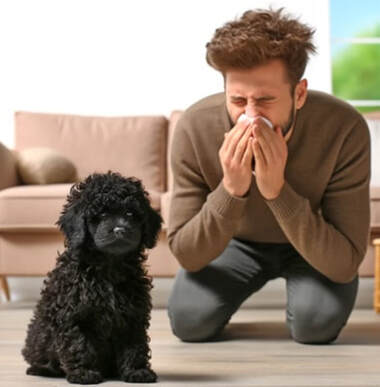Is the Russian Bolonka Hypoallergenic?
Understanding Hypoallergenic Dogs

Hypoallergenic dogs have gained popularity among pet lovers, especially those suffering from allergies. These breeds are often touted as the answer for individuals who love dogs but struggle with the sneezing, itching, and discomfort that can come with pet allergies. Let's explore the concept of hypoallergenic dogs, their characteristics, some popular breeds, and tips for living with them.
The term "hypoallergenic" suggests that these dogs are less likely to cause an allergic reaction. However, it's important to note that no dog breed is completely hypoallergenic. Dogs produce allergens in their saliva, urine, and dander (dead skin flakes). These allergens can trigger allergic reactions in sensitive individuals. Hypoallergenic dogs are those that tend to produce fewer allergens or shed less, thereby reducing the likelihood of an allergic reaction.
The term "hypoallergenic" suggests that these dogs are less likely to cause an allergic reaction. However, it's important to note that no dog breed is completely hypoallergenic. Dogs produce allergens in their saliva, urine, and dander (dead skin flakes). These allergens can trigger allergic reactions in sensitive individuals. Hypoallergenic dogs are those that tend to produce fewer allergens or shed less, thereby reducing the likelihood of an allergic reaction.
Characteristics of Hypoallergenic Dogs
Hypoallergenic dogs come in all shapes and sizes, but they often share certain characteristics that make them suitable for allergy sufferers:
- Low Shedding: Many hypoallergenic breeds have hair that grows continuously, much like human hair, which means they shed less fur and dander. Regular grooming helps to further reduce the amount of hair and dander in the environment.
- Small Size: While not a rule, many hypoallergenic breeds are small, which means they have less skin producing dander. However, there are also larger hypoallergenic breeds.
- Non-Oily Coats: Dogs with less oily coats tend to produce fewer allergens, as the oil can carry dander and allergens through the air.
Living with Hypoallergenic Dogs
Even with hypoallergenic dogs, managing allergies requires effort. Here are some tips for living comfortably with a Bolonka:
- Regular Grooming: Frequent baths and brushings can reduce the amount of allergens your Bolonka releases into the environment. Professional grooming may also be beneficial.
- Clean Living Space: Use HEPA filters in your home to trap dander and keep the floors and furniture clean by vacuuming and dusting regularly.
- Pet-Free Zones: Establish areas in your home, like the bedroom, where your Bolonka is not allowed to help minimize your exposure to allergens.
- Allergy Treatments: Consult with an allergist for treatments like antihistamines or immunotherapy to help manage your allergy symptoms effectively.
Breeding and Health Considerations
When choosing a hypoallergenic dog, consider their health needs and ensure you obtain your pet from a responsible breeder. Reputable sources will provide health clearances for their breeding animals to minimize the risk of inherited conditions.
Bolonki offer a wonderful opportunity for allergy sufferers to enjoy the companionship of a furry friend with reduced risk of allergic reactions. By choosing a Bolonka and taking appropriate measures to manage allergens, individuals with allergies can experience the joy of dog ownership.
Bolonki offer a wonderful opportunity for allergy sufferers to enjoy the companionship of a furry friend with reduced risk of allergic reactions. By choosing a Bolonka and taking appropriate measures to manage allergens, individuals with allergies can experience the joy of dog ownership.
